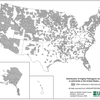Most towns, but not all, continue to livestream despite in-person meetings
ALBANY COUNTY — Even with the COVID-19 pandemic in a more manageable stage, many local government bodies are continuing to stream their meetings online, allowing residents to stay up to date with current affairs on their own schedule, from the comfort and safety of their homes.
But not all towns in the Enterprise’s coverage area have retained the remote option, despite its benefits and relative ease of implementation.
Currently, the Voorheesville Board of Trustees, and the Knox, Berne, and Westerlo town boards do not allow for remote observation of meetings, although Westerlo is investigating the possibility and Knox Supervisor Russell Pokorny — who took office in January — told The Enterprise this week that he would bring the issue up at the next town board meeting.
Berne Supervisor Dennis Palow did not respond to questions about whether he had considered livestreaming Berne meetings and Voorheesville Mayor Richard Straut could not be reached.
Livestreaming became popular in 2020, during peak quarantine, when municipalities had to scramble to figure out how to hold meetings remotely, ensuring that residents and representatives could stay safe while conducting necessary business. Different municipalities took different approaches, and there were some headaches along the way, but, in time, each one figured it out.
What soon became clear to Paul Wolf, the president of the New York State Coalition for Open Government, a not-for-profit that advocates for government transparency, was that remote access increased the number of citizens who would watch meetings.
“In the City of Ogdensburg,” he wrote in an email in 2020 to various news agencies, including The Enterprise, “with a population of 10,000, over 1,000 people registered to watch a City Council meeting live. The Buffalo Common Council recently had 18,000 people watch one of their meetings.”
Wolf told The Enterprise this week that, two years later, he doesn’t know if livestreaming has become more common than it was prior to the pandemic, but that it’s something the coalition encourages.
“The New York Coalition For Open Government supports hybrid meetings, where the public can attend in person or participate remotely through a livestream,” he said. “In addition to the livestream, meeting videos should be posted afterwards so that people who missed the meeting can watch it at any time.
“An important component of livestreaming is that the public should be able to comment during meetings by telephone or video live just as they can in many places in person,” he added. “Livestreaming has greatly increased public attendance at meetings across the state and is something that should be continued as we move back to in-person meetings.”
A bill introduced in 2020 that would mandate meeting livestreams is currently in committee in the New York State Legislature.
How to do it
For all the benefits it gives, livestreaming meetings incurs only a minor cost to towns, even if, as in the Hilltowns, they have relatively small budgets to work with.
In Knox, resident Brigitte McAuliffe streams town board meetings using only her smartphone. In Rensselaerville, the supervisor’s clerk, Carolyn Bauer, streams meetings to the town’s Facebook page with an iPad. Those devices, which can connect to the internet using a town hall’s Wi-Fi, can be had for only a few hundred dollars.
In New Scotland, town board meetings can be viewed online because meetings there are still being held remotely, with town officials using their personal devices to connect with each other. Governor Kathy Hochul extended the state of emergency, which had been set to end March 16, until April 15 so remote government meetings are still allowed.
New Scotland Supervisor Douglas LaGrange told The Enterprise that, when meetings resume in person, the town will use a video camera and laptop to offer a remote option to residents. He said that each cost around $800, “maybe plus or minus a little bit.”
“I’ve seen other municipalities who have used YouTube for streaming and it seems to work out pretty good,” LaGrange said.
Guilderland, the largest town that The Enterprise covers, goes a step further and broadcasts its meetings on cable in addition to livestreaming them online, using sophisticated equipment.
“The Town's IT Department recently installed a new broadcast system, consisting of three new HD cameras, advanced switching, audio mixer, and converters for broadcasting in cable and website,” Supervisor Peter Barber told The Enterprise in an email. “It also provides for automated in-person remote access.”
He said that the equipment altogether cost $16,000, which was covered by federal funds received through the American Rescue Plan Act.



